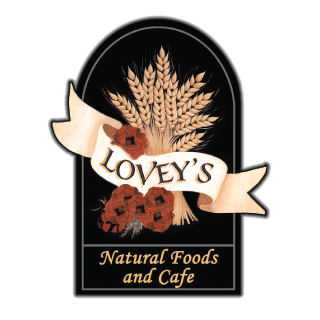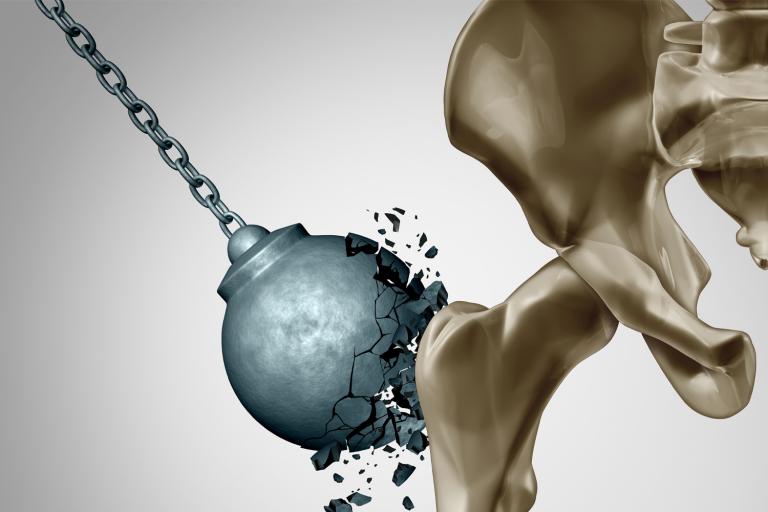More than half of Americans age 50 or older have osteoporosis or low bone mass (osteopenia). In osteoporosis, the bone gradually demineralizes until it becomes porous and lace-like, brittle, and breaks easily. Most of us don’t think about bone health until we hit 50+, but the choices we make every day have a tremendous influence on the ability of our bones to hold us up.
Osteoporosis affects five times more women than men, triggered by the rapid fluctuation and drop of estrogen in menopause and compounded by the fact that most women typically have less dense bones than men to begin with. That said, one third of hip fractures occur in men, who usually suffer worse outcomes and greater mortality than women.
Basics to Build Bones
The core formula for bone density starts with this trifecta. It takes all three together to ensure strong bones. Skimp on one, and you don’t get the impact.
- calcium intake
- vitamin D
- weight-bearing exercise
Nutrients for Bone Health
Magnesium, boron, vitamin K, and silica all help to build strong bones. You need a healthy digestive system to absorb those nutrients.
Start with a nutrient-rich diet, and not just from dairy (which gets mixed reviews) but also from leafy greens, cruciferous vegetables, beans, and bones like bone broth, bones-in simmered dishes, sardines, and canned salmon.
Supplements help fill in the gaps.
Recipes for Strong Bones
Knowing these nutrients, we can create delicious ways to make our body stronger. “Let food be your medicine and medicine be your food,” to paraphrase Hippocrates.
Exercise for Bone Strength
Weight-bearing exercise tells your body to build bone for the perceived future need, using calcium and other nutrients from the diet, which it can’t use without enough vitamin D.
What Chews at Your Bones?
Estrogen protects bones, but when it begins to wane in perimenopause, the balance shifts quickly. In addition, two overarching themes encourage the body to break down bone or impair its ability to build it: inflammation and acidity. That’s partly because your body uses calcium ions (which often get pulled from bones) to buffer acidity in the body to keep your pH stable. Increased risk of osteoporosis is linked to smoking, inactivity, stress, inadequate sleep, diabetes, etc. Too much caffeine, salt, red meat, soda, and sugar also wear away at bones.
Strong Bones by the Decade
-
In Your 20s
You build bone primarily during youth, so enjoy a healthy, plant-focused diet and regular activity. Consider digestive bitters and bitter salad greens that encourage healthy digestion.
Avoid soda, smoking, excessive drinking, salt, and extreme dieting. Excessive red meat (sorry, Paleo peeps) is one of the worst foods for bone density. Strict vegan diets can miss important nutrients, but if carefully followed and supplemented, legume-rich vegetarian and vegan diets tend to benefit bones.
-
In Your 30s
Consider adding a calcium and vitamin D supplement alongside diet. Aim for 1,000 milligrams (mg) of calcium and a minimum 600 mg vitamin D daily. Calcium carbonate is cheap and dense (which means fewer pills), but calcium citrate, hydroxyapatite, or calcium chelated to amino acids are all better absorbed. Whatever form of calcium you choose, divide it up morning and night and take it with food for optimal absorption.
Protect your bones during pregnancy. Your developing baby pulls from your calcium stores (your bones) if you’re not consuming enough. Eat healthfully and take a prenatal multivitamin plus a calcium supplement, ensuring optimal calcium intake.
Carve out time for stress management, adequate sleep, exercise, and nutritious food.
Watch caffeine and alcohol consumption; find better ways to energize and relax.
-
In Your 40s
Scrutinize medications that accelerate bone loss, such as antacids and proton-pump inhibitors as well as glucocorticoids and steroids. Work with your doctor and naturopathic doctor or herbalist to seek natural alternatives whenever possible.
In perimenopause, consider hormone balancing, boneprotecting herbs like black cohosh or red clover. Talk to your natural practitioner first if you have a risk of estrogen-dependent cancers.
Boost your daily intake of beans and legumes, which contain plant estrogens that may help prevent bone loss.
Get out hiking, running, or walking regularly, and do regular strength-training exercises.
Add strong-brewed nutritive herbal teas like nettle leaf, red clover blossom, oat straw, and horsetail as well as bone broth to your routine.
Don’t ignore chronic inflammatory diseases, including prediabetes, thyroid conditions, and chronic pain.
-
50s and Beyond
Start regular bone density DEXA screenings with your primary care practitioner at age 65, but talk to your doctor when you turn 50 to see if you have risk factors that warrant earlier testing.
Boost your calcium intake to 1,200 mg daily with 800 mg or more vitamin D, and consider a formula with additional nutrients like boron, vitamin K, magnesium, and silica. Yes, you’ll have to take several pills to get this in! Those herbal teas and bone broths help too.
Keep up the strength training and weight-bearing routines.
Don’t stop moving. Mind your mobility with gentle, regular exercises like walking and yoga. Seek professional guidance and physical therapy if pain impinges on your ability to move comfortably.
Support your balance and reduce falls with yoga, t’ai chi, and sensible footwear.

